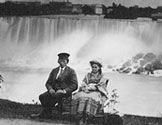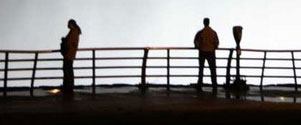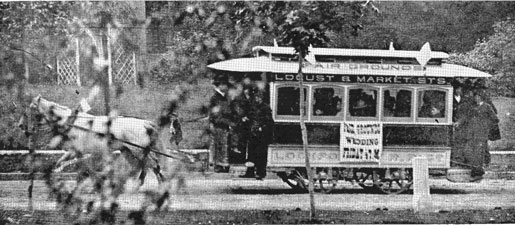

|
||||||||||||||||||||||||||||||||||||||||||
|
| ||||||||||||||||||||||||||||||||||||||||||
 |
 |
 |
 |
 The NFTA  The Niagara Frontier Transportation Authority (NFTA) is responsible for maintaining and improving all forms of public transportation in Erie and Niagara Counties. The NFTA Metro line carries over 26 million passengers annually. The NFTA was formed in 1967, but the authority traces its ancestry back nearly 160 years. The first predecessor company to NFTA was the Buffalo and Black Rock line that operated a horsecar on Niagara Street with connections to Canada by ferry in 1834. While the horsecar represented advancement over travel by foot, it still left a lot to be desired. The cars were hot in the summer and cold in the winter and animal indiscretions made for an odiferous trip for weary passengers. It became apparent that animal powered transportation was not the long-term answer. In the late 1800s, horse drawn cars were replaced by a system of electric street-railways. In 1892, the Niagara Falls and Suspension Bridge Railway began electric “trolley” service in the Cataract City. The Great Gorge Route was added in 1895-96 and soon became world famous. Daring passengers traveled electrically just a few feet above the boiling water of the Niagara Gorge. This spectacular trip survived until after the first World War and cost passengers $1 for the ride. Longer trolley lines, called interurbans, were used to link Niagara County cities. By 1895, Buffalo and Lockport were connected by interurban and the Olcott Beach line (IRC) by 1901 with ferry connection to Toronto. Few means of transportation of the time could compete with the electric railcar. In the summer, the companies used open cars to cool passengers with natural breezes and in the winter, closed cars were heated by coal stoves. In 1918, the High Speed Line marked the peak in rail travel between Buffalo and Niagara Falls. The line cost over $4 million and raced between the two cities in 60 minutes. The 1920s marked the beginning of the end for railcar service, brought about by the rise of the automobile and its first-cousin, the autobus. Early buses trace their ancestry to trucks and the ride was very similar. In 1923, the IRC line opened their subsidiary, the IBC, International Bus Company. Buses offered the company a chance to expand their routes without laying down expensive track and electric line. During the 1920s, the IRC network faltered and the Great Depression in 1929 hammered the final nail into the trolley’s demise. The Great Gorge Route closed in 1935, the last trolley car to Olcott Beach ran in 1937 and service in Lockport ended in 1938. Douglas Farley, Director Ann Marie Linnabery Erie Canal Discover Center 24 Church St. Lockport NY 14094 716.439.0431 CanalDiscovery@aol.com www.NiagaraHistory.org |